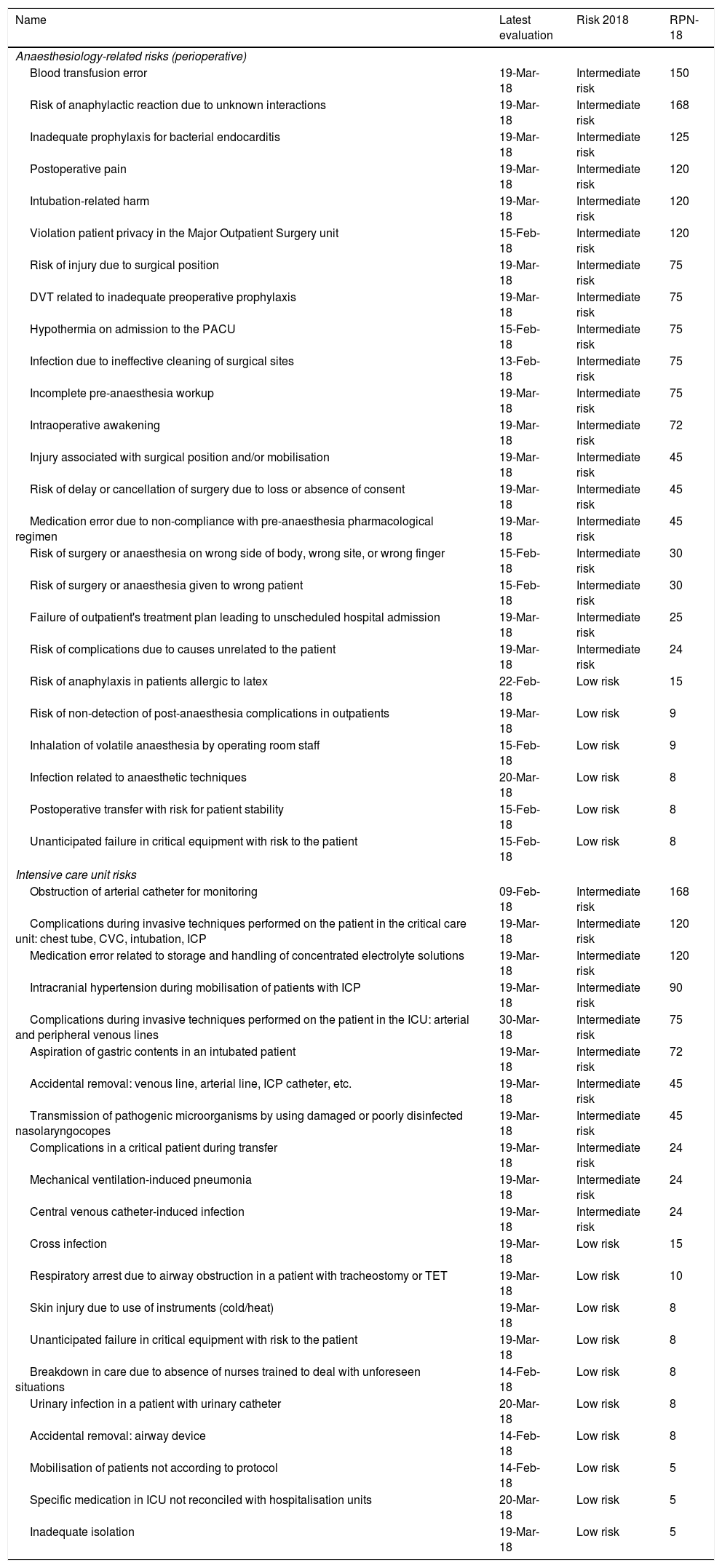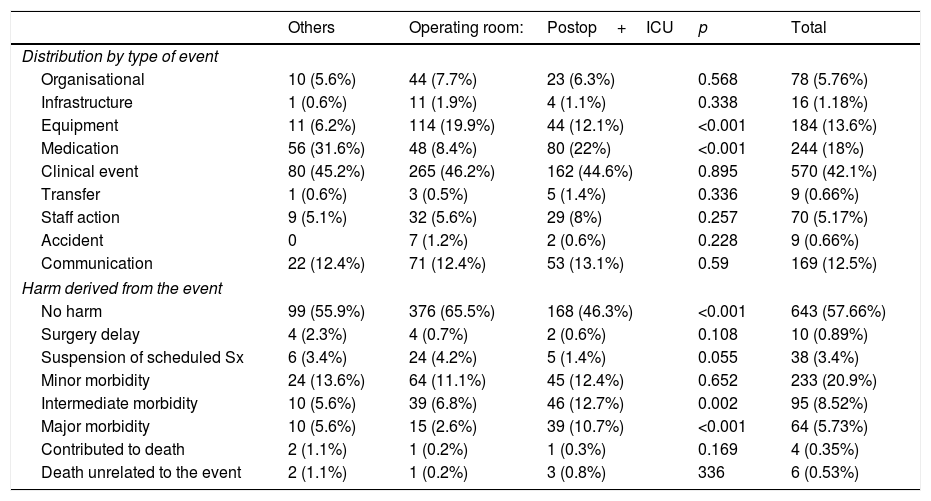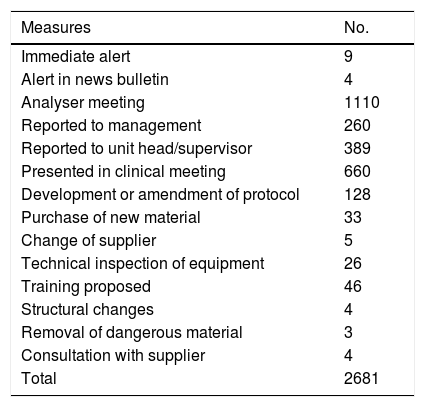The UNE 179003:2013 standard requires compliance with protocols to reduce the risks of patients from adverse events.
MethodsA description is presented of the procedure used in the Hospital Povisa to achieve UNE 179003:2010 certification for the intensive care unit, surgical division, and post-anaesthesia recovery unit (PARU). This was based on a risk management system, focusing on pro-active analysis using failure modes and effects analysis (FMEA) with the description of causes, consequences, risk weighting, and specific risk-minimising measures. A description is also presented of the analysis of reported adverse events (reactive analysis) in the Safety in Anesthesia and Resuscitation (SENSAR) notification system and the measures implemented over an eight-year period.
ResultsThe UNE 179003:2010 certification was obtained in July 2012, and the re-certification was achieved in July 2015. A total of 66 potential risks were established, which were weighted using a risk probability index (RPI), and measures were implemented that reduced this RPI by half. It also reflects the analysis of 1114 events declared in the SENSAR system over the past eight years, allowing for the introduction of 2681 measures, of which 98.4% are fully implemented.
ConclusionThe application of the risk management methodology allowed (a) to improve safety in the area of action by reducing the risk to which the patients are subject, and (b) to gain certification in the UNE 179003 standard.
La norma UNE 179003:2013 exige el cumplimiento de normas que permiten reducir los riesgos de los pacientes frente a eventos adversos.
MétodosPresentamos el procedimiento elaborado para la certificación en la norma UNE 179003:2010 del Bloque Quirúrgico, Unidad de Cuidados Intensivos de Anestesia y Unidad de Recuperación Postanestésica (URPA) en base a un sistema de gestión de riesgos basado en el análisis proactivo mediante la realización de AMFE con la descripción de causas, consecuencias, ponderación del riesgo y medidas específicas que minimicen los riesgos. Además, presentamos el análisis de los eventos adversos declarados (análisis reactivo) en el sistema de notificación SENSAR y las medidas implementadas durante 8 años.
ResultadosSe ha obtenido la certificación UNE 179003:2010 en julio del 2012 y la recertificación en julio del 2015. Se han establecido 66 riesgos potenciales que se han ponderado a través de un índice de probabilidad del riesgo (IPR) y se han implementado medidas que han permitido reducir dicho IPR a la mitad. También se refleja el análisis de 1.114 eventos declarados en el sistema SENSAR durante los últimos 8 años que ha permitido la implantación de 2.681 medidas, de las cuales el 98,4% están completamente implantadas.
ConclusiónLa aplicación de la metodología para la gestión del riesgo nos ha permitido en primer lugar mejorar la seguridad en nuestro ámbito de actuación reduciendo el riesgo al que están sometidos nuestros pacientes y, en segundo lugar, la certificación en la norma UNE 179003.












